Who is Hamas Blog
Iran and Saudi Arabia: A Bid for Middle East Dominance
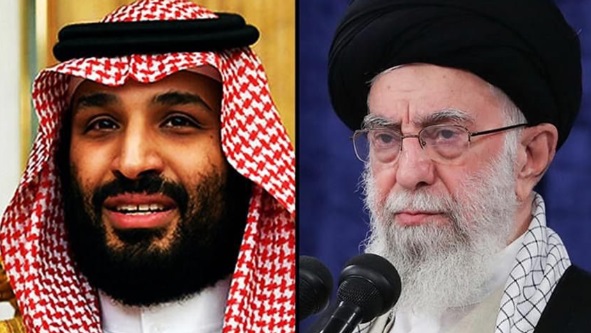
MBS and Ibrahim Rasisi. Credit: YNET’s FB page
Introduction:
The struggle for dominance in the Middle East between Iran and Saudi Arabia has created a web of conflicts and geopolitical tensions that impact the region and the world. This power rivalry, driven by proxy wars, poses a significant threat to global stability. Recent efforts to lower tensions and the re-establishment of diplomatic relations between these two nations indicate a desire to de-escalate, but the history of their proxy conflicts remains a concern. This article aims to shed light on Iran’s ambitions to dominate the Middle East through proxy wars, often targeting U.S. allies, and how it has entangled international alliances.
Saudi Arabia’s Adventurism and Proxy Conflicts:
Since the appointment of Mohammed bin Salman, often referred to as MBS, as crown prince in 2017, Saudi Arabia has adopted a more assertive foreign policy stance. This approach has led to a series of proxy conflicts with Iran-backed regimes and non-state armed groups, pushing the two nations dangerously close to direct hostilities. Notably, a precision missile and drone strike on Saudi oil facilities in 2019 was widely attributed to Iran. The Trump administration’s confrontational approach toward Iran also brought the United States and Iran to the brink of war in January 2020, with implications for Riyadh.
Biden Administration’s Diplomacy:
President Biden. Credit: TRT World’s FB page.
President Joe Biden has sought to re-engage diplomatically with Iran, primarily to revive the 2015 multilateral nuclear deal that the Trump administration had withdrawn from. Though these talks have faced challenges, they coincide with broader efforts across the Middle East to mend strained ties resulting from various regional conflicts and competitions. Moreover, Biden has pledged to prioritize human rights in U.S. foreign policy, potentially impacting U.S. partners in the Middle East, including Saudi Arabia. However, there has been no drastic shift in Washington’s regional policies, and Biden even visited Saudi Arabia last year to rally Gulf partners against Russia regarding the conflict in Ukraine. Nonetheless, tensions have risen once again due to Riyadh’s alignment with Moscow to maintain high global oil prices, defying U.S. pressure to increase production.
Ongoing Conflicts and Regional Tensions:
Even though there’s been a recent agreement to stop fighting, the civil war in Yemen is still causing a massive humanitarian crisis. Syria’s long-lasting civil war, of 12 years, is getting closer to an end, but it’s still pretty unstable. Libya had a temporary break in its civil war in 2020, and they even formed a temporary government in 2021. But things become sticky when it comes to having stable politics through elections. It’s important to remember that just because there’s no active fighting at the moment, it doesn’t mean they’re guaranteed to have lasting peace.
The Israel-Palestine Conflict and Regional Dynamics:
The recent intensification of hostilities between Israel and Palestinian factions in Gaza serves as a stark reminder that the Israel-Palestine conflict remains unresolved, with implications for regional powers and the United States. This conflict has become entangled in the broader Saudi-Iran power struggle, with Saudi-aligned leaders willing to overlook the Palestinian issue in exchange for Israeli support against Iran. Iran is the main supporter and funder in Hamas’s proxy wars against Israel.
Normalization Deals and Saudi Arabia’s Dilemma:
The U.S.-brokered diplomatic normalization agreements that Israel signed with the United Arab Emirates and Bahrain formalized a strategic realignment that had been an open secret in the region: a major shift in alliances. The big question remains whether Saudi Arabia will join or not. But, there’s a catch. Normalizing relations with Israel, without a solid resolution to the Israel-Palestine conflict, isn’t as appealing as it used to be. Especially now, with Prime Minister Benjamin Netanyahu back in the driver’s seat, leading a government that includes some pretty far-right parties. This could put a real burden on Israel’s newfound friendships in the Gulf.
Conclusion:
The power struggle between Iran and Saudi Arabia, driven by proxy wars and regional influence, has far-reaching implications for the Middle East and the world. While efforts to reduce tensions and the resumption of diplomatic relations are encouraging, the complex history of proxy conflicts remains a concern. The ongoing conflicts and the Israel-Palestine issue further complicate the situation, highlighting the need for careful diplomacy and a nuanced approach to regional stability. As the Biden administration navigates the Middle East, it will face the challenge of balancing its commitments to human rights with its relationships in the region, especially Saudi Arabia. The path to lasting peace in the Middle East remains uncertain, but continued engagement and diplomatic efforts are crucial to mitigate the conflicts and promote stability in the region.
Who is Hamas Blog
Why is Lebanon against Israel?
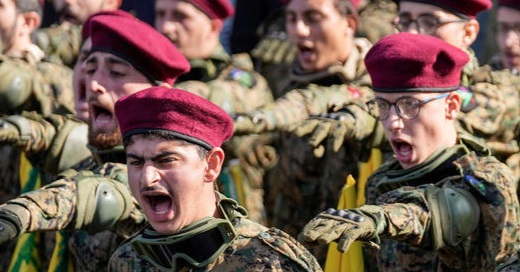
Hezbollah soldiers in Lebanon. Credit: CBN Israel FB page.
Recent events have seen a marked escalation in hostilities along the volatile Israel-Lebanon border, raising concerns about the potential for a broader regional conflict. This escalation thst had led Israel to evacuate communities near Lebanon border and poses significant risks, not just for the immediate area but for the stability of the Middle East at large. As tensions soar, understanding the intricate dynamics of this situation is crucial. We invite our readers to delve deeper into this complex issue.
Background of the Israel-Lebanon Conflict
Israel-Lebanon relations have been tumultuous since the 1940s. Lebanon participated in the 1948 Arab–Israeli War but was the first Arab League nation to seek an armistice with Israel in 1949. For years, Lebanon’s border with Israel remained relatively calm, especially compared to other Arab League states. However, this changed drastically during the 1970s and 1980s with the Lebanese Civil War. During this period, Israel allied with major Christian Lebanese militias, leading to the May 17 Agreement in 1983 for normalizing relations. This agreement was annulled by Lebanon in early 1984 following a power takeover by Druze and Shiite militias.
Lebanon’s involvement in the Arab-Israeli conflicts was relatively minor until the Lebanese Civil War. In the 1975 ambush on a bus by Phalangist gunmen, killing 27 Palestinian passengers, marked the beginning of the civil war. The war’s complexities were deeply intertwined with Lebanon’s sectarian political structure, dividing Shia and Sunni Muslims and Christians. In 1982, Israel invaded Lebanon, aligning with the Phalangist Christian militant group against the PLO and Shia militias, leading to significant civilian casualties and extensive damage to Beirut’s infrastructure.
Post-civil war, the 1989 Taif Agreement led to opportunities for Middle East peace talks. However, Israel’s continued entry of southern Lebanon spurred the formation of Hezbollah, backed by Syria and Iran, leading to terror warfare against Israel. Tensions escalated further with operations such as “Operation Accountability” in 1993 and “Grapes of Wrath” in 1996.
The situation evolved with the UN Security Council’s report in 2000 confirming Israel’s withdrawal to the Lebanese-Israeli line of separation, known as the “Blue Line.” However, disputes over the Blue Line persisted, and Hezbollah’s actions, such as taking Israeli soldiers captive in the Shebaa Farms area in 2000, continued to fuel tensions. The international border between Lebanon and Israel remains undetermined, awaiting a peace agreement.
This historical context provides a foundation for understanding the current dynamics of the Israel-Lebanon relationship, marked by a legacy of conflict, shifting alliances, and ongoing political and territorial disputes.
Current Situation at the Lebanon-Israel Border
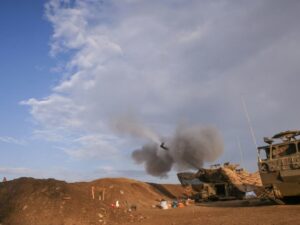
Lebanon Israeli border. Credit: ‘Daily Monitor’ FB page.
The current situation at the Lebanon-Israel border is marked by heightened tensions and escalating military activities. The Israel Defense Forces (IDF) conducted “widespread” strikes on Hezbollah sites in southern Lebanon, targeting the Hezbollah stronghold of Kafr Kila, as well as Bint Jbeil and Marwahin. These strikes were in response to Hezbollah’s rocket, missile, and drone attacks on northern Israel, including an incident where an anti-tank missile narrowly missed a vehicle in the Upper Galilee. Additionally, two explosive-laden drones launched from Lebanon hit open areas in the Mount Dov region on the Lebanon border, and another aerial target that entered Israeli airspace was downed by air defenses.
Since October 8,2023 Hezbollah-led forces have attacked Israeli communities and military posts along the Lebanese border on a near-daily basis, in support of Gaza amid the ongoing war there. These skirmishes have resulted in civilian deaths and the loss of IDF soldiers. Hezbollah has reported the deaths of more than hundred of its members during these skirmishes, mostly in Lebanon but some also in Syria.
The IDF has stated that many of Hezbollah’s rockets fired at Israel have fallen in Lebanon. IDF Spokesman Rear Adm. Daniel Hagari highlighted Hezbollah’s leader Hassan Nasrallah as endangering Lebanon for the sake of Hamas and Iran, emphasizing the significant impact of Hezbollah’s actions on the stability of southern Lebanon.
Israeli Prime Minister Benjamin Netanyahu has stressed the commitment to restoring security along the northern border, warning of severe strikes if Hezbollah widens the fighting. Meanwhile, War Cabinet Minister Benny Gantz, in a conversation with German Chancellor Olaf Scholz, emphasized the need to distance Hezbollah from the border and discussed the broader threat posed by the Iranian-led Axis of Terror.
The United States has been actively working to prevent the Gaza war from spreading, issuing warnings to Hezbollah and Iran against further escalation. Notably, UN Security Council Resolution 1701, which ended the 2006 Second Lebanon War, called for the removal of armed personnel south of Lebanon’s Litani River, except for UNIFIL and the Lebanese army and state security forces. Despite this, Hezbollah has entrenched itself across much of southern Lebanon, regularly launching rockets against Israel.
In parallel, Hezbollah has been engaging in a calculated and coordinated strategy, often allowing other groups to launch rockets against Israel from south Lebanon, to minimize the risks of full-scale war. However, this strategy has resulted in numerous casualties among Hezbollah fighters and displacement of thousands of civilians in southern Lebanon due to fears of another war.
Lebanese Political Forces’ Stance on War with Israel
Despite Hezbollah’s significant influence in Lebanese politics, there is a clear consensus among Lebanon’s political leaders against engaging in war with Israel. Prominent politicians, including former prime ministers and party leaders, have expressed their opposition, highlighting the dire economic consequences and the threat to national sovereignty. There is a general recognition that while defending Lebanon’s interests is paramount, engaging in a war with Israel would be disastrous for the already beleaguered nation.
Summary: Assessing the Current Situation and Iran’s Regional Interests

Lebanese hezbollah supporters. Credit: Arab news FB page.
The current situation along the Israel-Lebanon border is fraught with danger, underpinned by complex political, economic, and social factors. Lebanon’s vehement opposition to war with Israel stems from a keen awareness of the country’s fragile state and the catastrophic impact such a conflict would have. Meanwhile, Iran’s interest in the region, particularly its support for Hezbollah, adds another layer of complexity to this volatile situation. Iran’s potential involvement in opening another war front cannot be overlooked, as it could escalate the conflict to a regional scale, further destabilizing an already tense Middle East.
In conclusion, the situation along the Israel-Lebanon border remains tense and precarious. With Lebanon firmly against entering a war with Israel due to its internal vulnerabilities and the overwhelming consensus among its political forces, the focus now shifts to how this standoff will evolve in the context of broader regional dynamics and Iran’s strategic interests. As events continue to unfold, it is imperative to monitor this situation closely, understanding the profound implications it holds for regional stability.
Who is Hamas Blog
Does UNRWA help Hamas?
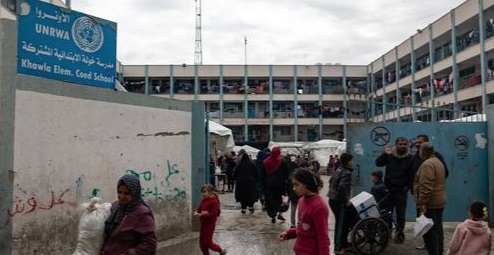
UNRWA building in Gaza. Credit: David Ziplowitz’s FB page.
UNRWA was established in 1949 to provide aid to Palestinian refugees. However, over the years, its role has come under scrutiny due to allegations of aiding Hamas, an internationally recognized terrorist organization. This concern was further fueled by instances like UNRWA staff praising Hamas’ October 7 massacres and the captivity of Israeli hostages by an UNRWA teacher. In this article we will delve deeper into understanding why these accusations against UNRWA arose, what is the essence of the relationship between this organization and Hamas and what the attacks of October 7 proved about the organization’s bonding with Hamas.
What is UNRWA?

UNRWA supply Credit: Capital FM Kenya’s FB page
UNRWA, the United Nations Relief and Works Agency for Arab Refugees in the Middle East, was established in December 1949 by the United Nations General Assembly Resolution 302. Its creation was a response to the crisis following the 1948 Arab-Israeli conflict, which resulted in a large number of Arab refugees. Initially, UNRWA was intended to provide direct relief and work programs for these refugees. Over the years, UNRWA’s mandate has been repeatedly renewed, and its operations have expanded to include education, healthcare, and social services.
UNRWA’s approach to the Palestinian refugee status is unique compared to other refugee organizations. Unlike the United Nations High Commissioner for Refugees (UNHCR), which focuses on resolving refugee situations, UNRWA perpetuates the status of Palestinian refugees across generations. This policy involves granting refugee status to all descendants of the original refugees from the 1948 Arab-Israeli war. As a result, the number of Palestinian refugees under UNRWA’s care has expanded from 750,000 in 1950 to an estimated 5.8 million today. This expansive definition has been a critical factor in the ongoing increase in the number of Palestinian refugees.
UNRWA’s Support for Hamas
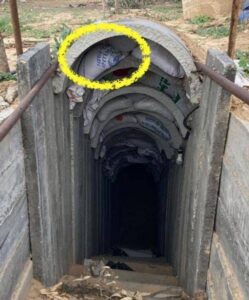
UNRWA cement bag found in Hamas tunnels. Credit: Aliya Return Center FB page.
Recent news demonstrates UNRWA’s operations in Gaza provide direct support for Hamas. This includes employing Gazans who are active Hamas members, using UNRWA installations for terrorist activities, and transporting terrorists and weapons in UNRWA ambulances.
Are UNRWA and Hamas the Same?
While they are not the same organization, reports indicate deep connections between the two. Many UNRWA employees, including teachers, have expressed support for Hamas and its violent actions against Israel. Moreover, a significant number of Hamas terrorists are graduates of the UNRWA education system.
UNRWA’s Response to Recent Events
UNRWA’s response to the events surrounding the October 7, 2023 attacks has been a subject of considerable concern. Several UNRWA staff members, including teachers and educational personnel, were found praising the Hamas-perpetrated October 7 massacres on social media and celebrating the attacks resulted in significant civilian casualties and included brutal atrocities, on Israeli cities and kibbutzim. Additionally, it was reported that an UNRWA teacher in Gaza was involved in holding an Israeli hostage, further implicating the information regarding UNRWA staff involvement in activities associated with Hamas. Moreover, many of the terrorists involved in the October events were graduates of UNRWA schools, highlighting a troubling connection between the education provided by UNRWA and the radicalization of its students. These incidents have raised serious questions about the extent to which UNRWA can be considered a neutral and legitimate aid organization.
Conclusion: The Need for a New Aid Organization
Given UNRWA’s response to recent events and its controversial relationship with Hamas, there is a growing call for the establishment of a new, internationally managed aid organization. This new entity would ideally be more effective and neutral, not influenced by any terrorist group or political agenda, and more in line with the original humanitarian mission intended for such agencies.
Who is Hamas Blog
Do Gaza civilians work in Israel?
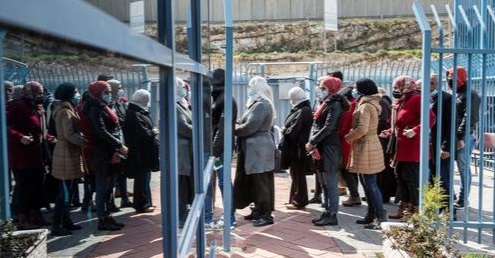
Palestinian workers crossing the border into Israel. Credit: Amiram Brutman’s FB page.
In the tumultuous landscape of the Middle East, the Gaza Strip stands out as a region of particular hardship and complexity. Among the many facets of life in Gaza, the opportunity for civilians to work in Israel has been a topic of significant discussion and controversy. This article delves into the intricate dynamics of Gazan civilians working in Israel over the past few years, exploring its impact on Gaza’s economy, and examining the broader geopolitical implications.
Gazan Workers in Israel: A Recent Overview

Palestinian construction workers in Israel. Credit: ‘Globes English’ FB page.
The history of Gazan workers working in Israel is marked by shifts in policy and circumstance. Following Hamas’ takeover of the Gaza Strip in 2007, Israel largely closed its borders to Gazan workers. However, in recent years, Israel has issued up to 15,500 work permits to Gazans, allowing them to cross into the country for employment. This shift marks a significant development, as these workers are among the first from Gaza to work officially in Israel since 2007.
Economic Effects on Gaza
The return of Gazan workers to Israel has had a notable, albeit limited, impact on the Gaza economy. While individuals can earn substantially more than what’s possible in Gaza, the overall effect on Gaza’s wider economy is minimal, but beneficial for the individual who will be able to fully support his family needs. With a heavily constricted economy under the Israeli-Egyptian blockade, the permits inject about $1 million a day into Gaza’s economy – a small amount given the scale of economic challenges faced by the 2.3 million population of the region.
Work Permits: Leverage and Lifeline
For many Gazans, these work permits are not just about employment; they represent a lifeline for better living conditions. The permits also give Israel a form of leverage over Hamas. For instance, Israel can decide to avoid giving further permits, thus affecting the individual economy of Gaza.
Involvement on October 7t, 2023 Attack Plans
A critical aspect of the discourse around Gazan civilians working in Israel is their alleged involvement in the October 7th attack. Reports indicate that individuals with work permits in Israel gathered information about Israeli cities and settlements in the south, contributing to the planning of this brutal attack. This development highlights a darker side of the work permit system, revealing how it can potentially be exploited for purposes other than economic relief. The incident underscores the complexity of this issue, where the need for employment and economic sustenance in Gaza intersects with security concerns in Israel. It’s a stark reminder of the intricate and often tense relationship between these two, influenced by a history of conflict and the ongoing geopolitical dynamics.
Current State of Work Permits
As of now, after the October 7 attack and the ground entry into Gaza in order to capture all those who were involved in the attack, Israel decided to ban residents of Gaza from entering to work, until further notice. In general, it is safe to say that the situation with work permits for Gaza civilians remains a delicate balance. Israel often describes these permits as goodwill measures. The permits are subject to Israel’s assessment of the security situation, with increase or decrease in the number of permits often linked to the level of calm or tension in the region.
Conclusion
In conclusion, the granting of work permits to Gazan civilians to work in Israel is a multifaceted issue, interwoven with economic necessity, geopolitical leverage, and the pursuit to give a lifeline to Gaza’s residents. While providing a critical source of income for individual Gazan families, the permits also serve as a strategic tool in the complex relationship between Israel and the Gaza Strip. The future of these work permits and their impact on both Gaza’s economy depends on the outcomes of the current “Iron Swords” operation and the ability of the Israelis to feel safe again in their own country.
-
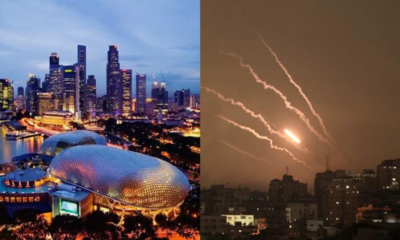
 News4 months ago
News4 months agoGaza could Have Been Singapore. Hamas Turned It Into a living nightmare
-

 News4 months ago
News4 months agoRape, slaughter, and atrocities—see the real face of Hamas
-

 News4 months ago
News4 months agoShe died while saving lives.
-

 News4 months ago
News4 months agoTrigger warning: This is the atrocity that’s happening in Israel right now
-

 News4 months ago
News4 months agoMonsters: Yahya Sinwar and Hamas kidnapped 150+ children and women.
-

 News4 months ago
News4 months agoKidnapping elderly and children: Hamas are no heroes
-

 Hamas War Strategy, Tactics, and PR4 months ago
Hamas War Strategy, Tactics, and PR4 months agoThe War Crimes of Hamas and ISIS in Exploiting Civilians
-

 News4 months ago
News4 months agoHamas turns a music festival into a massacre






